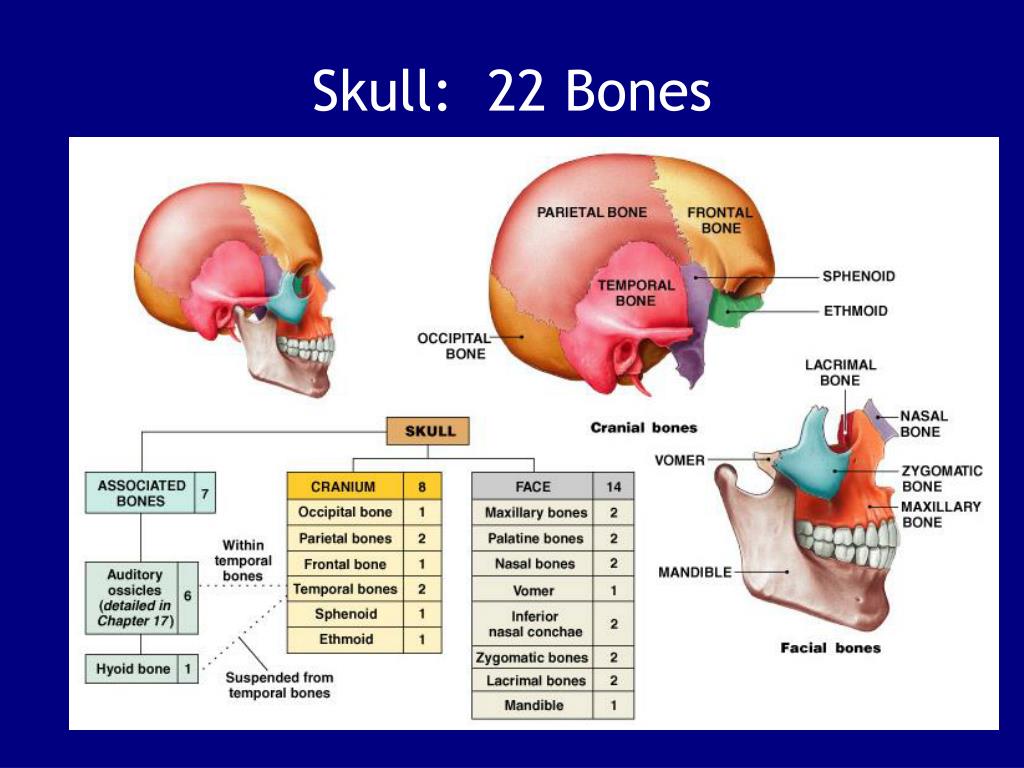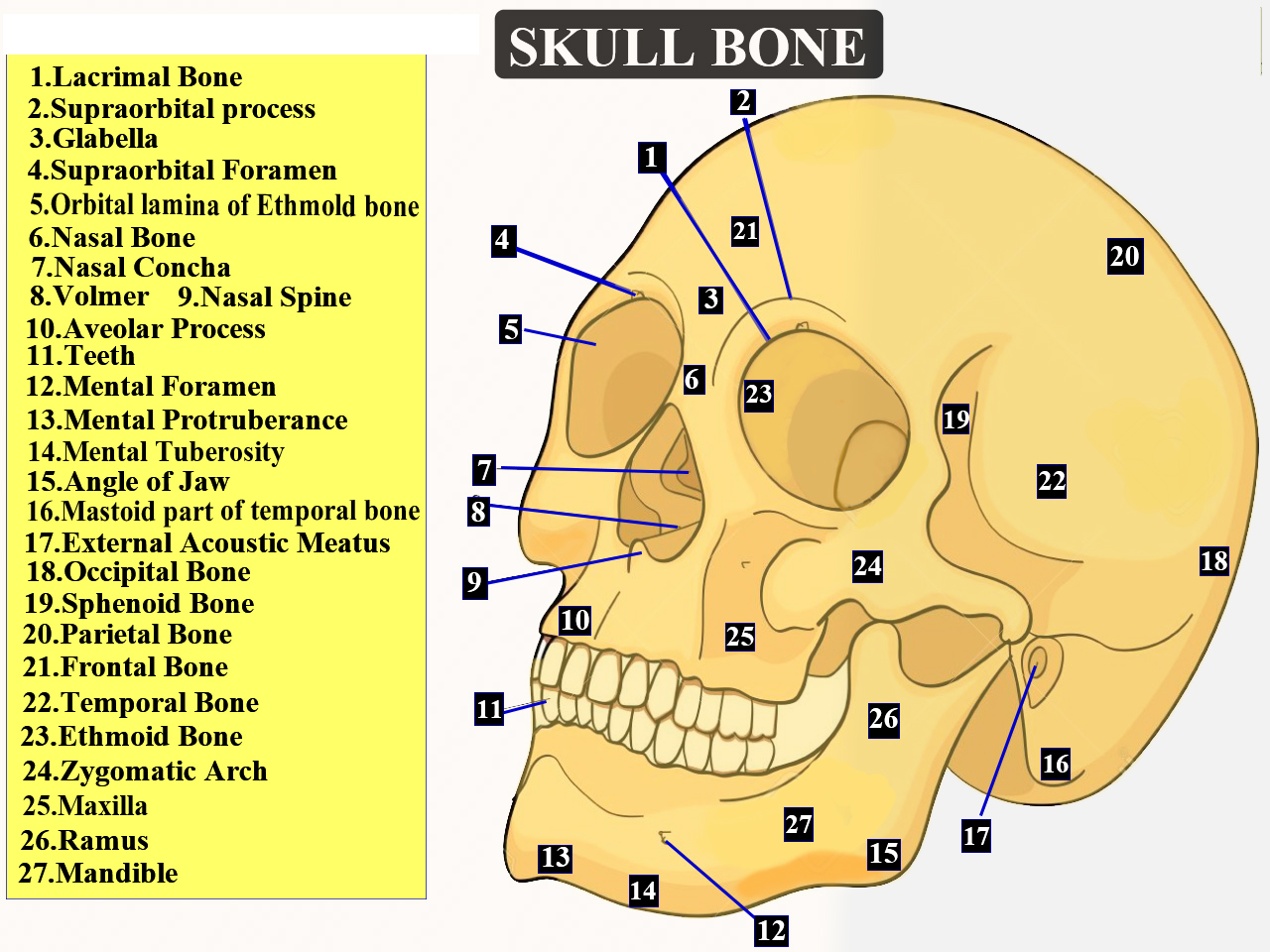Your skull is made up of 22 different bones

Your Skull is Made Up of 22 Different Bones

The human skull is a remarkable structure that protects the brain and other vital organs located within the head. It is composed of 22 different bones, each playing a crucial role in providing structure, support, and protection. Understanding the composition of your skull can help you appreciate the intricate design and complexity of the human body.
The skull consists of two main parts: the cranium and the face. The cranium forms the protective casing around the brain, while the face encompasses the features that make each individual unique. In total, the cranium is made up of eight bones, and the face is formed by 14 bones.
The cranium is further divided into two groups: the calvaria and the cranial base. The calvaria, also known as the skullcap, is the upper part of the cranium that covers and protects the brain from above. It is composed of the frontal, parietal, and occipital bones. The frontal bone is located at the front of the skull, forming the forehead. The parietal bones sit on either side of the skull, while the occipital bone forms the back of the skull.
The cranial base, on the other hand, forms the bottom part of the skull and provides support. It consists of the ethmoid, sphenoid, and temporal bones. The ethmoid bone is located between the eye sockets and helps form the nasal cavity. The sphenoid bone, shaped like a butterfly, contributes to the structure of the middle part of the skull. Lastly, the temporal bones are located on the sides of the skull, housing the ear canals.
Moving on to the facial bones, they play a crucial role in supporting facial features and providing attachments for muscles involved in chewing, speaking, and facial expressions. The facial bones include the maxilla, zygomatic, nasal, lacrimal, mandible, vomer, inferior nasal conchae, and palatine bones.
The maxilla forms the upper jaw and houses the upper teeth. The zygomatic bones, also known as the cheekbones, shape the prominence of the cheeks. The nasal bones create the bridge of the nose, while the lacrimal bones house the tear ducts. The mandible, or lower jaw, is the only movable bone in the skull. The vomer is a small, thin bone separating the nose into two nasal cavities. The inferior nasal conchae are delicate, scroll-shaped bones located in the nasal cavity, and the palatine bones contribute to the structure of the hard palate.

The arrangement and interlocking of these 22 bones provide stability and protection to the brain and facial structures. Moreover, they allow necessary functions like breathing, eating, speaking, and maintaining facial expressions.
In conclusion, the human skull is an intricate structure formed by 22 different bones. Understanding the composition and function of these bones helps us appreciate the complexity and marvel of the human body. Each bone contributes to the structural integrity, protection, and support necessary for our daily activities.
Share
Related Posts
Quick Links
Legal Stuff

